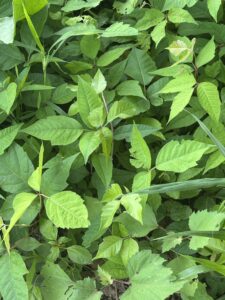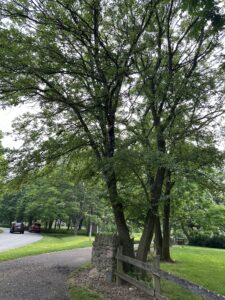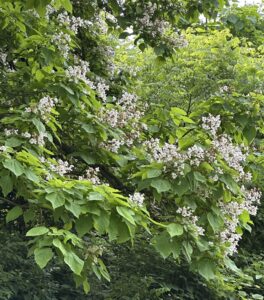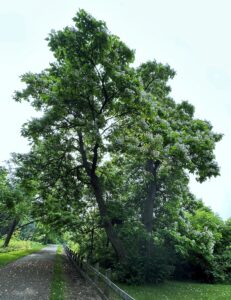Birding Around Dayton, OH Part 3
 Englewood Metro Park. Dayton, OH https://www.metroparks.org/places-to-go/englewood/
Englewood Metro Park. Dayton, OH https://www.metroparks.org/places-to-go/englewood/
There are 4 separate areas that make up Englewood Metro Park. We only had time to visit one of areas: the East Park. And we hit a bonanza of birds – the mother lode. You can get the addresses for each of the entrances from the above website. All 4 parks open every day of the year at 8AM. As I said in my first blog on Aullwood Audubon, for birders and photographers, 7AM or better yet, 6AM, are better times. However, just like at Aullwood, the birds were singing and calling for the hour we were at this park.

From their website:
“In 1963, Dayton was growing … quickly. A group of local citizens became concerned about the pace of this growth and how ‘urban sprawl’ had found its way to our region, threatening the balance of developed versus natural areas. These committed individuals fought to preserve our natural areas by establishing a county-wide park district to acquire and manage open space for the recreation and enjoyment of people in the metropolitan region. Thanks to their early efforts, Five Rivers MetroParks has been able to maintain forests, prairies, wetlands and other native habitat where wildlife thrives and people can make personal connections with nature for more than 60 years.”
My hat is off to these local citizens who not only recognized what was happening, but took steps to create these spaces of nature within the urban sprawl. Places where everyone can come to unwind, to connect with nature, to be outside, and to have fun. These parks are well worth visiting and spending your time.
Englewood is, in total, about 1900 acres and the Stillwater River runs through all 4 areas. There are also lakes and ponds which all seem to be connected to this river. The East Park is just beautiful. There are walking trails of the same quality as at Aullwood Audubon, however East Park is quite hilly and so these trails will be more of a moderate difficulty. There are paved roads in all 4 areas and so if you are not mobile, or the day is too hot and humid to enjoy a long walk, you can do a whole lot of birding from your car.

We were simply astonished at all the birds we heard. And we were able to see many of these birds. The trees here are just as big and as fully leafed out as in both Aullwood Audubon and Woodman Fen, but especially when driving, Englewood is more of an open woodland or savanna than an actual woodland so you can see birds flying from tree to tree and if you hear one singing, you can have some luck locating it within a tree. Birding by sight was easier here. This is our list from about 1 hour of birding:
Water birds:
Great Blue Heron
Great Egret
Wood Duck
Double-crested Cormorant
Vireos and Warblers:
Red-eyed Vireo
Warbling Vireo
Common Yellowthroat
Yellow Throated Warbler
Prothonotary Warbler
Yellow Warbler
Woodpeckers:
Downy Woodpecker
Red-bellied Woodpecker
Pileated Woodpecker
Black Birds:
Red-winged Blackbird
Brown-headed Cowbird
Common Grackle
American Crow
Sparrows:
Song Sparrow
Chipping Sparrow
Flycatchers:
Eastern Kingbird
Eastern Wood-Pewee
Acadian Flycatcher
Great Crested Flycatcher
Mimics:
Northern Mockingbird
Gray Catbird
Smaller Birds:
Carolina Wren
House Wren
Tufted Titmouse
White-breasted Nuthatch
Carolina Chickadee*
Tree Swallow
Rough-winged Swallow
American Goldfinch
Chimney Swift
Blue-gray Gnatcatcher
Indigo Bunting
Larger Birds:
American Robin
Northern Cardinal
Eastern Towhee
Blue Jay
Cedar Waxwing
*Neither Cleon nor I can identify whether a chickadee we observe is a Carolina or a Black-capped. For us, these birds look alike, sound alike, and these 2 birds have overlapping ranges in southern Ohio. (I discuss this at length in my ebook: COMMON SONGBIRDS AND RAPTORS IN YOUR YARD, NEIGHBORHOOD, AND FAVORITE PARK.)

 There are beautiful big trees all through this park. As I was walking along, the photo on the far left is what I saw on the paved walkway – squished berries. I looked closer and they were mulberries! I have not seen a full-grown mulberry tree in a long time and when I looked straight up, there it was. A real beauty! Unfortunately, not a good tree for your yard because the berries are truly a mess – but the ones you eat? Pure heaven!
There are beautiful big trees all through this park. As I was walking along, the photo on the far left is what I saw on the paved walkway – squished berries. I looked closer and they were mulberries! I have not seen a full-grown mulberry tree in a long time and when I looked straight up, there it was. A real beauty! Unfortunately, not a good tree for your yard because the berries are truly a mess – but the ones you eat? Pure heaven!

Gorgeous, full grown, and majestic Catalpa (Catalpa speciosa) trees were in full bloom throughout this park – and throughout all of central and southern Ohio and along the turnpike in Pennsylvania. Nurserymen everywhere might tell you the Catalpa tree is a wonderful yard tree because of its distinctive, sculptural branching structure and beautiful summer bloom – all true. But the enormous seed pods which are up to 2 feet or more in length – and can be called ‘winter interest’ by these same nurserymen – are a nightmare to rake up and dispose of. Take my advice and admire this tree in a public park or along that turnpike.
everywhere might tell you the Catalpa tree is a wonderful yard tree because of its distinctive, sculptural branching structure and beautiful summer bloom – all true. But the enormous seed pods which are up to 2 feet or more in length – and can be called ‘winter interest’ by these same nurserymen – are a nightmare to rake up and dispose of. Take my advice and admire this tree in a public park or along that turnpike.
If you download the Englewood brochure, you will see a map of all 4 areas and in the East Park – where we were – is a small area which is a bit tucked away. It is what is called a remnant of a swamp forest and there is a boardwalk trail. A swamp forest is an area of forest or woodland that is characterized by trees and undergrowth that thrive in saturated soil, but will tolerate periods of dry soil. A swamp forest typically experiences periodic flooding each and every year. In this area are trees such as black ash and swamp white oak. And also a tree called pumpkin ash (Fraxinus profunda) – a tree I not only have never seen, but had never even heard of. It is considered to be a rare tree in Ohio. If you would like to know more about this tree and see some photos, here is a good website from North Carolina State: https://plants.ces.ncsu.edu/plants/fraxinus-profunda/.
Cleon and I loved Englewood Park. And we loved Aullwood Audubon and Woodman Fen. And these are not the only areas for birding in and around Dayton – I will blog about one more tomorrow. We plan to come back and stay longer than a day and a half – we think 4 days would be just about perfect. This area is filled with vireos and warblers who nest here. There are plenty of flycatchers to observe. And the small woodland birds are just singing and singing. Woodpeckers abound. The Dayton, OH area is truly a mecca for birders. I hope you consider visiting. We plan to come back!

